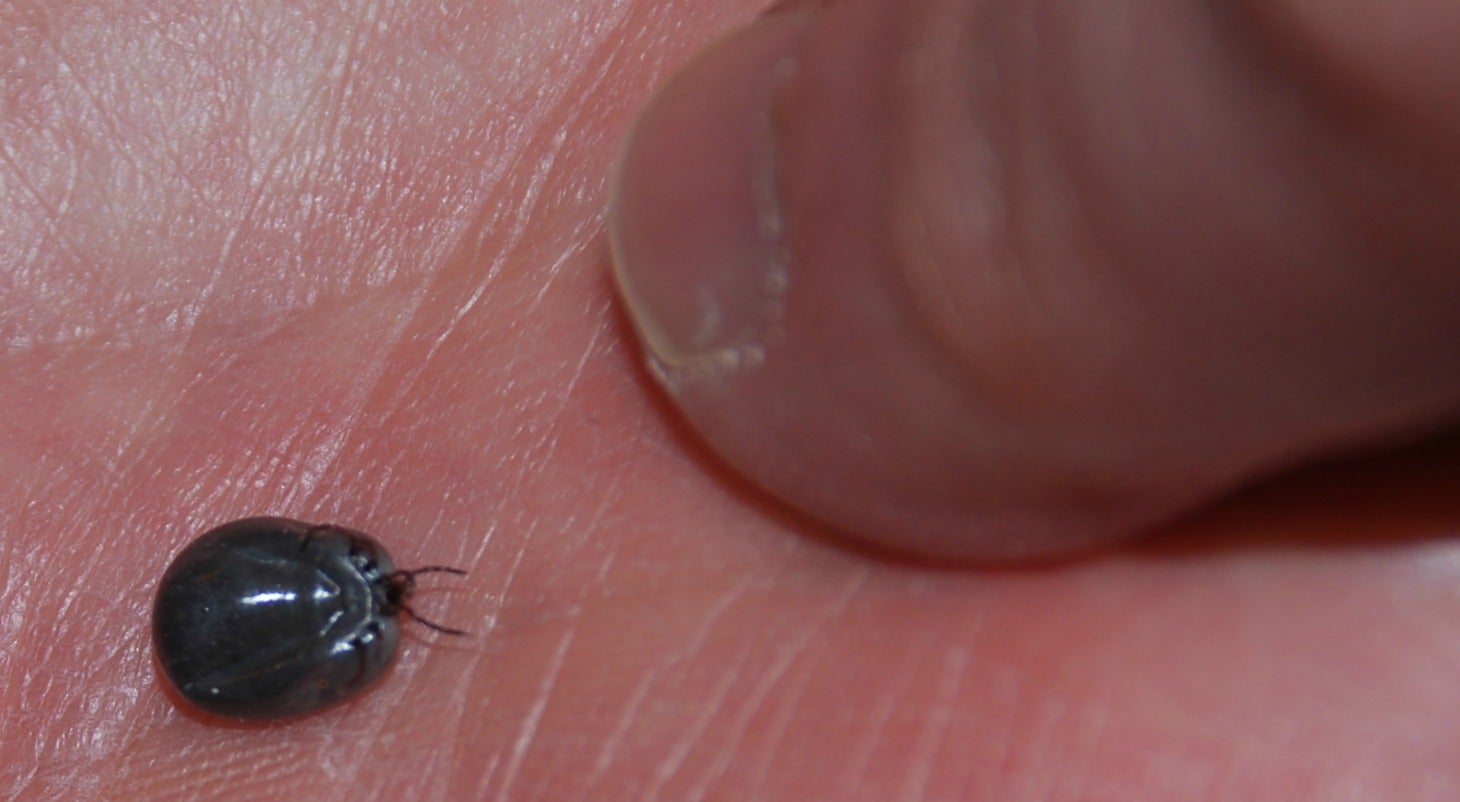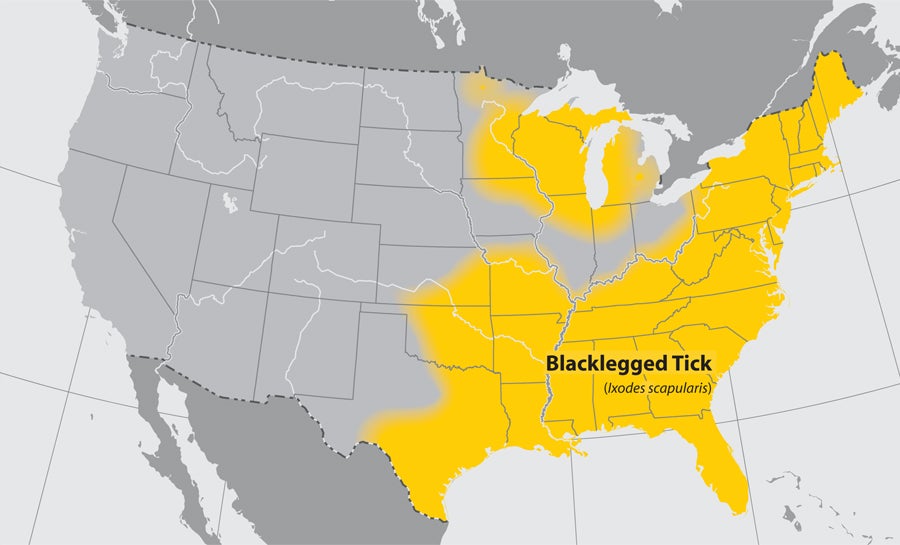Summary: The tick Ixodes scapularis transmits Lyme Disease and is expanding its range across the eastern U.S. As we discovered recently, basic tick ID skills relevant to disease treatment appear to be lacking in the medical community.
Engorged tick (Ixodes sp) acquired by U-M Botanist near Chelsea, MI in late March
Last week Herbarium associate Mike P. sent a staff email to warn us of deer ticks. After doing some outdoor work west of Ann Arbor he found an engorged tick on his chest (genus Ixodes) that left a small rash. The tick (see above photo) looked like an adult of the blacklegged tick Ixodes scapularis, which transmits the bacteria that causes Lyme Disease.
Blacklegged ticks are undergoing a range expansion in the eastern U.S. A Michigan study found that 40-45% of I. scapularis adults carry the Lyme Disease bacteria.
The doctor prescribed antibiotics as a preventative while waiting for the tick to be identified. Meanwhile, Barry OConnor, acarologist and curator in the UMMZ, saw a photo of the tick (via one of my tweets) and asked to examine the specimen. From the photo it wasn’t possible to distinguish the blacklegged tick from the more common groundhog tick, Ixodes cookei. Groundhog tick is “only” a vector for viral Powassan fever, which cannot be treated with antibiotics.
It turns out the medical lab identified the specimen simply as “Ixodes sp.” then threw it away.
Barry had this to say:
“The possible medical outcomes of a bite from Ixodes scapularis and Ixodes cookei are totally different. Pathogens vectored by I. scapularis are bacteria (Borrelia burgdorferi – agent of Lyme disease, Anaplasma phagocytophilum – agent of human granulocytic anaplasmatosis) and protozoans (Babesia microti – agent of human babesiosis). Ixodes cookei, on the other hand, is only associated with Powassan encephalitis virus. Thus, any treatment/management of disease symptoms would really require a specific identification on the tick.”
As Mike noted, “Species identification makes all the difference, and they [the medical community] need to be aware of it, particularly when there is expertise nearby to do that. The great irony in my experience is that this could have easily been done, and treatment adjusted (or even eliminated) as necessary. ”
I didn’t realize how much tick and potential pathogen diversity could be found locally. As I am often reminded when talking with curators, there is a world of biological diversity below the surface of photographs and field guides. It is a privilege to have access to museums that document swaths of biological diversity, and access to curators who can interpret the biology of their particular taxonomic groups.
It is only a matter of time before blacklegged ticks and Lyme Disease make their appearance in southeast Michigan. Meanwhile, I will urge U-M students to protect themselves against ticks, and to preserve any engorged ticks for species-level identification.
Update: Barry writes “American dog tick, Dermacentor variabilis, has broadly extended its range in our area and is now the most common tick that will bite people. This is the vector of the bacterium, Rickettsia rickettsii, the agent of Rocky Mountain Spotted Fever, which, to my knowledge, has not yet been reported in SE Michigan, although there are cases in Ohio every year.” Here are Michigan’s Five Most Common Ticks, including all species mentioned here.


One thought to “On Ticks, Taxonomy and Lyme Disease”
Comments are closed.